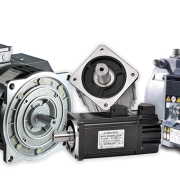How to introduce factory automation, seamlessly
The end goal is lean, agile production process and system.
There will be few manufacturers who are not exploring the ways in which technology can better connect, manage, measure and inform factory production, including integration of R&D, sales, buying and HR teams.
If you are at the start of this (potentially never ending) journey to automate factory production and management, what sort of steps do you need to go through?
Look before you leap
There are some beguiling and well “packaged” options around to introduce automation to factory floors. No matter how urgently you need to grab a competitive edge, it’s highly recommended that you thoroughly research what you actually need, not just what you want.
What are the possibilities for your particular industrial operations and what tasks do you feel would be best served by automation? What kit and machinery can you buy now that will be adaptable and expandable to support future business growth?
Test and plan
Find ways to test your manufacturing automation projects before you make commitments. This could be witnessing the machinery first hand in someone else’s factory, or using modern technology such as Business Information Modelling.
How will its footprint impact on the physical environment? Are the likely returns strong enough to justify the investment, and how will system implementation be best achieved?
Taking time to agitate the solutions and their likely impact gives you time to secure staff engagement too, which can be crucial if automation is viewed with trepidation.
No room for complacency
Just because the machinery you invest in does things quicker, better and with improved data control and output, doesn’t mean it will be perfect. Often the more sophisticated the machinery and technology are, the more complex it is to tackle problems.
It’s important to remember your automation systems and equipment will sometimes let you down. If they represent a substantial upfront investment, subsequent downtime can be disastrous. Once it is all in place, it needs to keep running smoothly to create the hoped for rate of return.
When installing new automation systems, make sure you have a good stock of the spare parts most likely to be required. You should also set up a good working relationship with Pro Servo, so you can use their insights, speedy service and contacts to “plug gaps” as quickly as possible, at an affordable price.






